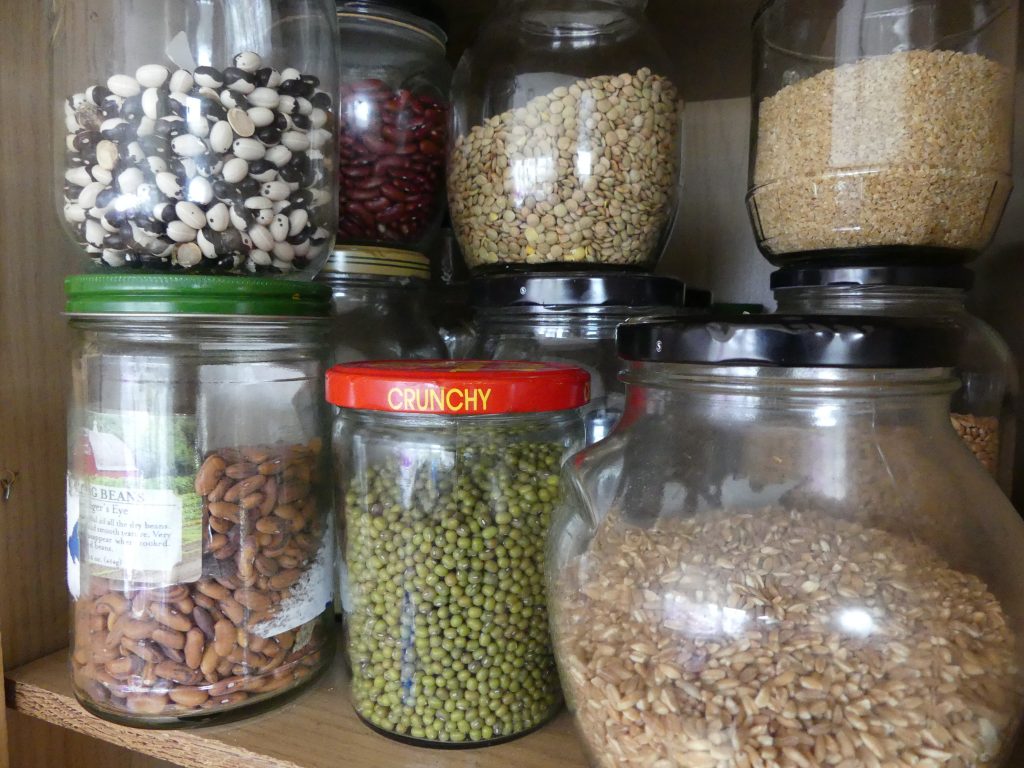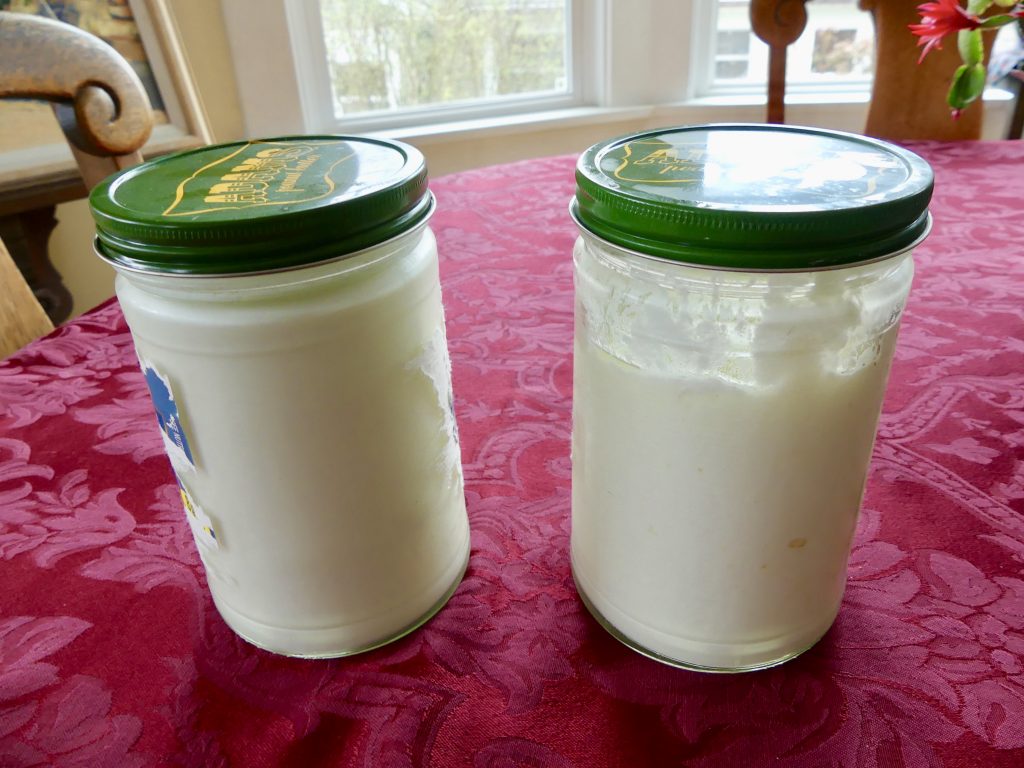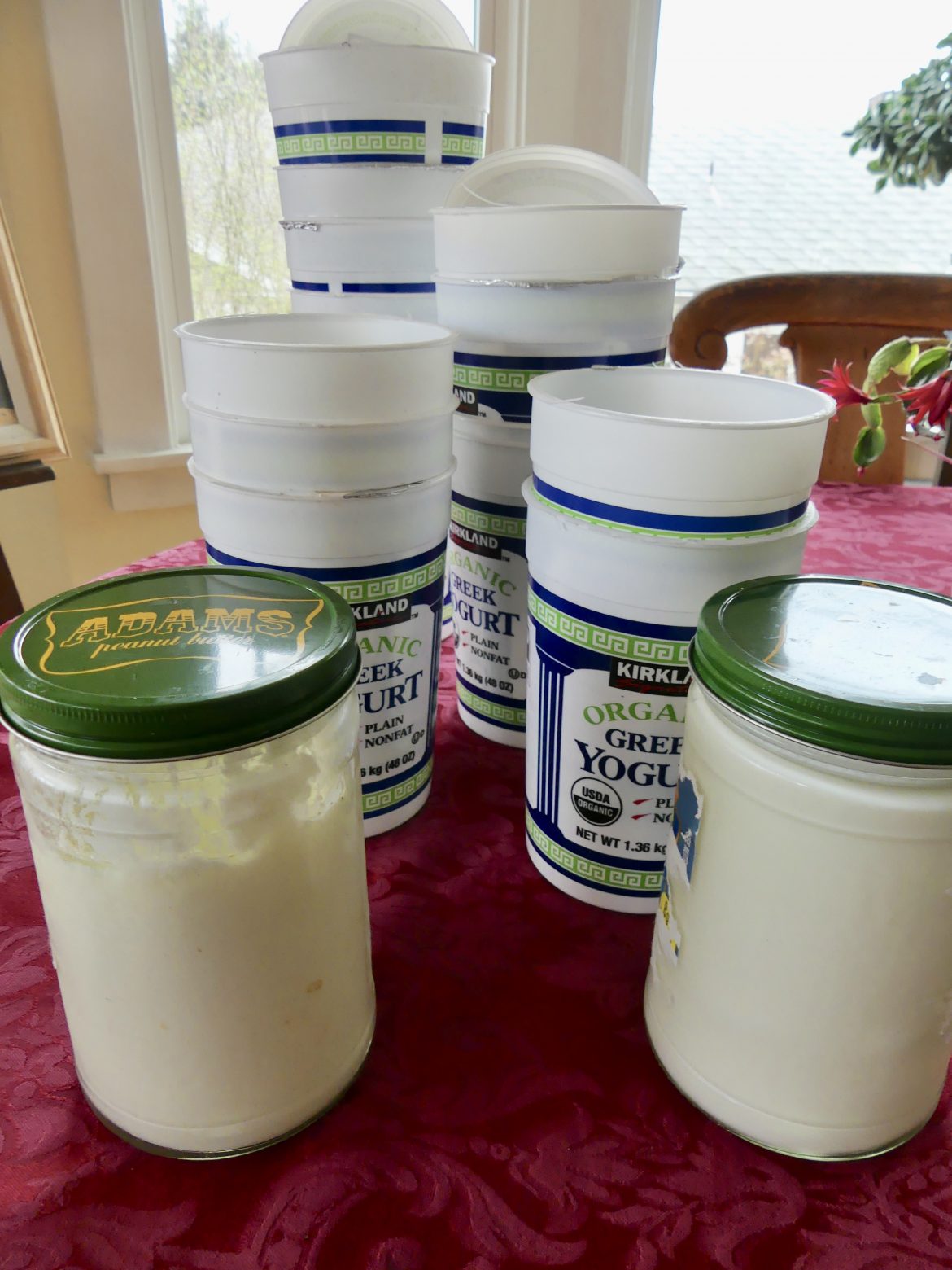by Christine Sine
Yesterday I made yoghurt for the first time in a couple of years. I was primarily motivated by my question How do I sustain what was seeded in Lent? I have been reading a lot lately about the impact of plastic on our environment – the horrific plastic seas growing in our oceans – this one in the Caribbean and the even bigger Great Pacific Garbage Patch. and am determined to cut down on my own contribution to this problem. It only takes me about 15 minutes to make enough to last me for a couple of weeks.
To me it is an important stewardship issue that I feel all Christians need to be aware of and prayerfully consider both their contribution to the pollution of our planet and the steps, however small they can take to reduce plastic and other forms of waste. Last year I posted these suggestions – using public transport more, walking, committing to plant based diets, and alternative energy are small steps we can all take, and most of them don’t just reduce pollution, they save money too.
A Small Step For Me
My yoghurt making is only a small step – it will only reduce plastic waste by 50 tubs each year, as well as save me $250 but for me it is drawing a line in the sand and saying “I must do more.” Like any journey this journey into a life with less waste must begin with a single step and this is mine. And in doing it I become aware of what the next steps that I need to take are.
Inventory Where Your Waste Comes from
Making yoghurt has helped me to evaluate my lifestyle – where I am wasteful and where I already do “the right thing”. Sometimes I feel really virtuous because there is much I already do that helps reduce waste but there are a lot of other things I can improve on that I am considering.
Cook Your Own Meals
Making meals from scratch is one great waste reducer I am good at and for me it is both relaxing and satisfying. I grew up in a family where fast food and packaged meals were unheard of so this is easy for me, but I know some people find it overwhelming. So think of some small steps you could take. Stack up all the packaging that comes from your food in a week. Those single use coffee filters, now used by 1 in 3 American households are particularly bad as this article argues and evidently will survive in the landfill for a good 4-500 years. They are also expensive so if you are really wanting to establish a more sustainable lifestyle they are a good item to consider ditching. What is one simple thing you could do to reduce this kind of waste?
If you don’t feel you have time to cook all your meals from scratch think about the ones that have the most packaging – like breakfast cereal. I have made my own granola for many years. Not only does it save me hundreds of dollars a year, it also keeps a lot of packaging out of the landfill. You may not like granola but here are some other recipes for cereal – everything from grape nuts to cornflakes can be home made, though some of these look as though they will take quite a bit of time. What is one meal that you could start making from scratch without increasing the pressure on your life?
Perhaps you could invite friends over to cook meals together then divide these up into containers that can go in the freezer – home made TV dinners that are both more nutritious and more environmentally friendly than the bought kind. An added advantage is that you could buy ingredients together in bulk, saving even more packaging and dollars on the way. What is one food item you use regularly that you could buy in bulk and reduce packaging?
Grow Your Own Herbs.
You don’t need to be a master gardener to grow your own herbs but it can save a lot of money and help you avoid a lot of small plastic packages. Thyme, mint, oregano, rosemary and basil will all grow in small pots on the windowsill. Experiment with your favourites and have some fun. Most of them are hard to kill.
Join Your Local Buy Nothing Group
If you have a Facebook account and live in the U.S., look up your neighborhood Buy Nothing Group for more information about these groups. This is a wonderful tool to recycle and reuse things, as well as a way to meet more of your neighbours and show generosity! For example – when I end up with too many tomato starts I advertise them on our local Buy Nothing group. I have not only had a lot of grateful people respond but have often been gifted with other vegetable starts in return.
Swap Out Your Household Plastics
Living in Seattle where plastic bags are no longer available in supermarkets it is easy for me to think I am doing my part. But this really is the tip of the iceberg. What I was stunned to find out this week is that toothbrushes are one of the biggest plastic contributors to landfills. Most of us use 2-3 per year which doesn’t sound like much but when you consider that these will still be siting there in 10 possibly 1000 years time it is mind boggling. And there are affordable alternatives – bamboo toothbrushes can be as cheap as $2 a piece and are compostable. 
In her post Switch Out the Plastics – Simple Swaps, Hannah has some excellent suggestions on how to reduce plastic in our lives. One simple one she mentions is replacing plastic storage containers when they wear out with glass. I find I don’t even need to buy new containers – empty peanut butter jars (what I use for my yoghurt) large olive jars, and small jars that chicken bouillon comes in are particularly good storage for shelves and freezer alike. If they are going in the freezer just make sure you leave enough space at the top so that they don’t crack when the contents expands… and if you live in Seattle and need a few extra storage jars, I have a lot I would like to share.
What To Do When You Order On Line.
Don’t you hate all that packaging that online purchases are often wrapped in? Evidently we can do something about it – If you have a preferred place you purchase from ask them for only recyclable or complain where it hurts – like on their social media sites. This article is a fascinating look at some of what is happening to packaging to help reduce waste particularly because of consumer pressure. This has inspired a lot of companies to become more waste conscious.
Amazon I suspect is one of them. Amazon is working to make their packaging more recyclable. Now that is fine for me living in a community where all our recycling goes out on the curb every two weeks, but I know it is a challenge for those who have to drive miles to a recycling facility. Unfortunately some of Amazon’s affiliates are not as good and I still have items arrive in Styrofoam packets. Some of this I am able to recycle in the bottom of planters. It means I need less soil and it makes the pot lighter. One simple way to help reduce this kind of waste is to make occasional purchases of multiple items that all arrive in one box rather than using the “Buy now with one click” button. Where do you make most of your online purchases? Is there a way to consolidate these or to request recyclable packaging?
What Is Your Response?
Prayerfully watch either of the videos embedded in this post.
Living in a way that is sustainable for our planet isn’t easy for us, and more and more people are opting for a zero waste lifestyle. Unfortunately for many it is not even on the radar when we think of what it means to be a disciple of Christ. Yet I think it is an important part of what Christ calls us to be and to do. We are meant to be responsible stewards of this earth, enabling it to flourish and thrive. I hope that you will take time this week to prayerfully consider changes your lifestyle that God may be prompting you to make in order to be more faithful to the call to follow Christ.
Basic Home Made Yoghurt

Homemade Yoghurt
(To do a gallon, just quadruple this recipe.)
1 qt. milk (any type)
1/4 c. dry milk powder for a thicker product more like Greek yoghurt (opt.- I don’t use this)
And/Or 1 T. thickener; such as carrageenan, pectic, or gelatin (opt.)
2 T. plain yogurt with live cultures. You don’t need special yoghurt starters but if you are nervous about experimenting like this you might like to try with a yoghurt starter the first time.
1. Combine the milk, milk powder (if using), and thickener (if using). Heat the mixture to 180F.
2. Let the milk cool to 120F. Add the yoghurt; mix well.
3. Keep covered, at 120F, for at least 6 hours, or until set to the consistency of thick cream. (For this step I pour it into old glass peanut butter jars with metal lids and cover it with a warm blanket and place in a warm room. Alternatively put it in your oven preheated to 150F and turn it off. Wrap the yoghurt in a blanket or towels and set it in a pan all wrapped up. After three hours REMOVE THE JARS , reheat the oven, turn it OFF again and put the jars back.)
4. Refrigerate and serve cold. This will keep, refrigerated, for up to 2 weeks.
5. Remember to save some of the old yogurt for your next batch!


1 comment
[…] bread helps save on waste and money! Christine just wrote a great post about making her own yogurt here. 6. Growing your own herbs. I’m not saying you need to be a master gardener or need a big back […]